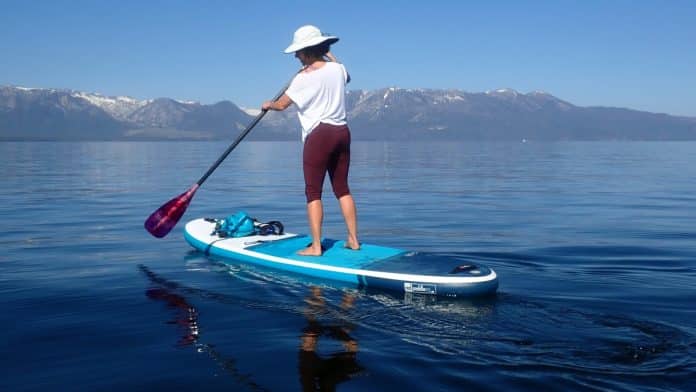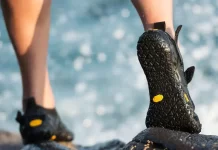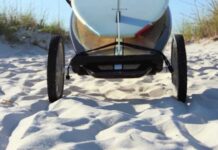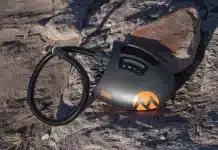Paddling through pristine waters on a Stand-Up Paddleboard (SUP) is a refreshing experience that allows us to connect with nature while enjoying a full-body workout. However, the unfortunate side effect that occasionally accompanies this activity is the dreaded blister.
These little skin irritations can damper our paddleboarding adventures, but fear not! In this article, we will explore the common causes of blisters when SUP paddling and arm ourselves with preventive measures to ensure smooth, blister-free rides every time.
Common Causes of Blisters
Friction
Friction is one of the primary causes of blisters while SUP paddling. When there is repeated rubbing or pressure on the skin, particularly in areas where it is in direct contact with equipment such as the paddle or board, blisters can form. The friction causes the outer layer of the skin to separate from the underlying layers, creating a blister.
Friction due to Ill-fitting Gear
Another common cause of blisters is friction caused by ill-fitting gear. When your gear, such as your paddle or board, does not fit properly, it can cause excessive rubbing and pressure on specific areas of your hands or feet. This can result in painful and uncomfortable blisters.
Moisture
Moisture can also contribute to the formation of blisters. Paddling activities often involve contact with water, and prolonged exposure to moisture can soften the skin and make it more prone to friction. Additionally, wet gear or clothing can exacerbate the friction and increase the likelihood of blisters.
Repetitive Movements
You are engaging in repetitive movements while SUP paddling can also lead to blisters. When you perform the same motions over an extended period, it puts repetitive stress on specific areas of the skin, resulting in friction and eventual blister formation.
Improper Paddling Technique
Using improper paddling techniques can be another cause of blisters. This can include gripping the paddle too tightly, using incorrect hand placement, or maintaining an inefficient arm motion. These faulty techniques can increase friction and pressure on specific areas of the hands, leading to blisters.
Preventing Blisters
Choose the Right Paddle Grip
One effective way to prevent blisters is to choose the correct paddle grip. Opt for a grip that is comfortable and provides sufficient padding to minimize the amount of direct contact between your skin and the paddle. Experiment with different grips to find the one that suits you best and reduces friction.
Wear Appropriate Gear
Wearing appropriate gear is crucial for preventing blisters. Ensure your gear, including your wetsuit or drysuit, fits properly and allows for a full range of movement. Avoid gear that is too tight or loose, as this can contribute to friction and discomfort. Additionally, consider wearing moisture-wicking clothing to help keep your skin dry and reduce friction.
Break-in Your Equipment
Breaking in your equipment before embarking on a long paddling session can help prevent blisters. New paddles or gear can sometimes have rough or abrasive surfaces that can cause friction and blisters. Take the time to break in your equipment by using it for shorter periods initially or rubbing it with sandpaper to smooth any rough areas.
Improve Your Paddling Technique
Improving your paddling technique can significantly reduce the risk of blisters. Focus on learning proper hand placement and efficient stroke techniques to minimize unnecessary friction. Avoid gripping the paddle too tightly, which can increase pressure and friction on the hands. Additionally, strive for a fluid arm motion that reduces the strain on specific areas and distributes the workload evenly.
Use Protective Gloves or Paddling Socks
Using protective gloves or paddling socks can be an effective measure to prevent blisters. These accessories are a barrier between your skin and the paddle or board, reducing friction and preventing blisters. Choose gloves or socks that are comfortable, breathable, and provide adequate padding for optimal protection.
Apply Lubricants or Anti-Friction Cream
Applying lubricants or anti-friction cream to high-friction areas can help reduce the risk of blisters. These products create a protective layer on your skin, reducing friction and minimizing the chances of blisters forming. Look for products specifically designed for sports or activities involving repetitive motion, and apply them generously before paddling.
Keep Your Hands Dry
Keeping your hands dry during paddling sessions is essential for blister prevention. Excess moisture can soften the skin and make it more prone to friction and blister formation. Use a towel or chamois to dry your hands regularly throughout your paddling session, and consider using moisture-wicking gloves or socks to help keep your hands dry.
Take Regular Breaks and Rest
Taking regular breaks and allowing your hands and feet to rest is crucial for preventing blisters. Prolonged paddling sessions without breaks can increase friction and pressure on the skin, increasing the likelihood of blisters. Take short breaks every hour to give your hands and feet a chance to recover and reduce the risk of blisters.
Maintain Proper Hydration and Nutrition
Proper hydration and nutrition play a vital role in preventing blisters. When your body is dehydrated or lacking essential nutrients, your skin may become more susceptible to friction and blister formation. Stay hydrated by drinking water regularly and consume a balanced diet that includes foods rich in vitamins and minerals to maintain healthy skin.
Select Adequate Paddling Routes
Choosing adequate paddling routes can also contribute to blister prevention. Avoid rough or challenging routes that require excessive force or put undue stress on your hands and feet. Opt for smoother waters or routes, allowing a more comfortable and controlled paddling experience reducing the risk of blisters.
Addressing Friction
Use a Proper Paddle Grip
Using a proper paddle grip is essential for addressing friction and preventing blisters. Ensure that your grip provides sufficient padding and support to minimize the pressure and friction on your hands. Experiment with different grip styles and materials until you find the one that works best for you and reduces discomfort.
Use Correct Paddle Length
Using the correct paddle length is crucial for addressing friction and reducing the risk of blisters. A paddle that is too long or too short can result in improper hand placement and increased friction. Invest in a paddle that is the appropriate length for your height and paddling style to ensure optimal performance and reduce the chances of blisters.
Check and Adjust Foot Placement
Checking and adjusting your foot placement can help address friction and prevent blisters. Ensure that your feet are correctly positioned on the board, with the balls of your feet aligned with the board’s centerline. Avoid excessive pressure on specific areas of your feet, leading to friction and discomfort.
Maintain Optimal Stance and Balance
Maintaining an optimal stance and balance while paddling is crucial for addressing friction. Improper posture or balance can increase pressure and friction on specific areas of your body, leading to blisters. Focus on proper body alignment, distribute your weight evenly on both feet and engage your core muscles to maintain stability and reduce friction.
Optimizing Gear Fit
Choose the Right SUP Board
Choosing the right SUP board is essential for optimizing gear fit and preventing blisters. Ensure that the board is the appropriate size and shape for your skill level and paddling style. A board that is too small or too large can lead to improper posture and increased friction, increasing the risk of blisters.
Select the Proper Paddle
Selecting the proper paddle is essential for optimizing gear fit and preventing blisters. Consider paddle length, weight, and materials when choosing a paddle. A well-fitted paddle will reduce the likelihood of blisters by minimizing friction and pressure on your hands.
Ensure a Properly Fitted Leash
Ensuring your leash is correctly fitted is crucial for optimizing gear fit and preventing blisters. The leash should be secure and snug but not too tight to avoid excessive rubbing and pressure on your ankle or calf. An adequately fitted leash will allow for a full range of movement without causing discomfort or blisters.
Managing Moisture
Wear Moisture-Wicking Clothing
Wearing moisture-wicking clothing is an effective way to manage moisture and prevent blisters. These types of clothing are designed to pull moisture away from your skin and promote quick evaporation, keeping your skin dry and minimizing the risk of blisters. Look for clothing made from polyester or merino wool, known for their moisture-wicking properties.
Consider Drysuits or Neoprene Gear
Consider using dry suits or neoprene gear to manage moisture and reduce the risk of blisters. These items create a barrier between your skin and the water, preventing moisture from saturating your clothing and gear. Drysuits and neoprene gear also provide insulation, ensuring your body stays warm even when in contact with water.
Dry Your Gear Thoroughly After Paddling
Drying your gear thoroughly after each paddling session is essential for managing moisture and preventing blisters. Moist gear, such as wetsuits or booties, can retain moisture and increase the chances of friction and blisters. Hang your gear in a well-ventilated area and allow it to air dry completely before storing it.





































